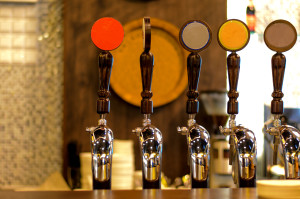 On the surface, draught drawing systems are not hard to understand. However, there are several factors which contribute to an excellent draft beer system. Besides quality and proper installation, the key is to maintain proper balance throughout the system. You don’t want too strong of a flow, too weak of a flow, too much foam, too little foam, etc. These things happen when there is a breakdown in the system balance. In part I of this series on “beer balance” we covered the four key components which affect proper balance in your tap beer system.
On the surface, draught drawing systems are not hard to understand. However, there are several factors which contribute to an excellent draft beer system. Besides quality and proper installation, the key is to maintain proper balance throughout the system. You don’t want too strong of a flow, too weak of a flow, too much foam, too little foam, etc. These things happen when there is a breakdown in the system balance. In part I of this series on “beer balance” we covered the four key components which affect proper balance in your tap beer system.
Carbonation Affected by Applied Pressure and Temperature
It’s important to remember the goal here: you don’t want carbonation in the beer to diffuse into the headspace and you don’t want excess carbonation to be absorbed into the beer. At any given temperature, a certain amount of pressure must be applied to keep the proper carbonation levels. The first part of balancing your system is to balance temperature and applied pressure. There are other variables such as climate and altitude which affect carbonation levels, but once those are determined, they basically remain consistent. Stabilizing the temperature will make your job much simpler, as that allow you to focus in on getting the right amount of pressure. Beware, if different beers need different pressures, they will probably flow at different rates since the beer line resistance is usually equal among across the board for a multiple line dispense system.
Traveling From Keg to Glass
So far everything we’ve discussed has occurred at or around the keg. However, beer must travel from the keg to the glass, hence encountering the fourth component from Part I: resistance. Remember, the two types of resistance are: the beer line (dynamic) and changes in elevation (static). These resistances are overcome by the applied pressure. However, this is where it gets tricky. We have already seen, applied pressure must be at a given level to hold carbonation. However, it also must be must equal to the total resistance of the draught system. With two different variables affecting the amount of applied pressure, problems arise if the resistance called for by the system is more (or less) than the pressure needed to for carbonation purposes. To avoid this, draught technicians design systems which match resistance to keg carbonation.
System Technicians Balancing Act
The individual hardware components of a beer line system have a set amount of resistance. System technicians design these systems with varying pieces to meet the overall desired resistance. For instance, 20 feet of 1/4” (internal diameter) beer line made of vinyl offers 17 PSI worth of resistance. On the other hand, 20 feet of 5/16” beer line made of barrier tubing generates a mere 2 PSI of resistance. Using these, and many other options, any system can be created to operate in a set range of applied pressure values. Unfortunately, in places which have long beer lines or multiple floors even systems designed with the lowest resistance materials may find the applied pressure need for beer carbonation far exceed by the system requirements. If that is the case, a system which uses mixed gas is required, with the exception of a pneumatic beer pump.
In Part III, we will cover how mixed gas systems are used to overcome the applied pressure problem. If you need more help understanding draft beer line systems, please contact us at Clean Beer, in Milford, MA. We can meet all your beer line needs, from installation to cleaning and maintenance. In addition to our services, we sell new and used beer line equipment, for your home or bar. Clean Beer is the home of the clean beer line experts, contact us about your home or commercial tap needs.
